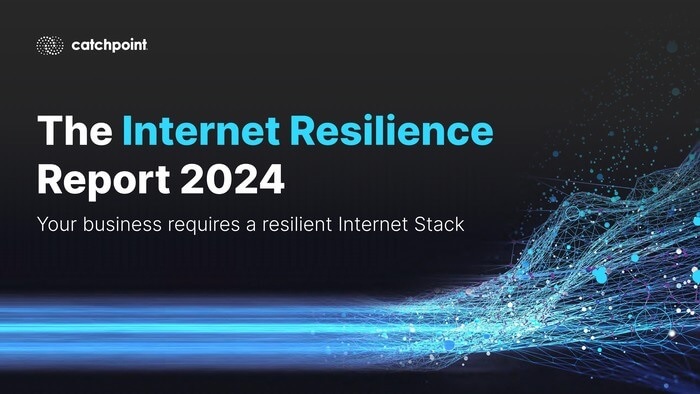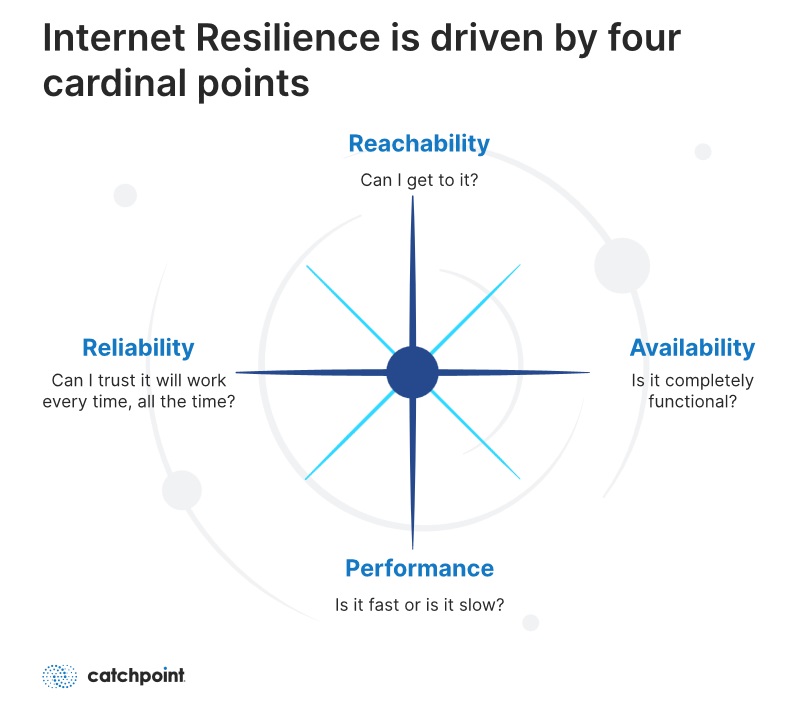
Almost all (97%) of respondents state that a reliable, resilient Internet Stack is of the utmost importance to their business success, according to Catchpoint's inaugural Internet Resilience Report.
CEOs and company boards are prioritizing Internet resilience as a critical factor in maintaining and enhancing business operations. The Internet's complexity and its vital role in connecting businesses and customers necessitate a holistic resilience strategy. Companies rely on the Internet for connectivity and digital experiences, and outages can add up to many millions of dollars, making the need for Internet Resilience a board-level discussion. In 2024, any business, whether involved in eCommerce or operating with a distributed or remote workforce, must ensure strong Internet resilience.

Based on insights gathered from 310 digital business leaders, key findings from the new report revealed:
■ 78% identify improved customer experience as the primary driver for resilience programs.
■ 77% highlight the critical role of third-party technology providers in their Internet resilience strategies.
■ 43% estimate a total economic impact or loss of more than $1 million monthly due to Internet outages or degradations and some Internet outages cost some companies upward of $10 million a month.
■ 40% cite talent and skillset as a major barrier to implementing IPM.
"Our findings highlight the criticality of Internet Resilience in our always-on, digital-first world," said Mehdi Daoudi, CEO of Catchpoint. "Businesses must expand their observability boundaries beyond Application Performance Monitoring to include Internet Performance Monitoring. This is the best way to proactively address issues impacting operations as it is the only way to get real-time insights and ensure superior performance that can reduce risks to both reputation and revenue." 
Catchpoint's report provides actionable insights for businesses to enhance their Internet Resilience, and their top suggestions include:
Think about Resilience from the Top Down
Leaders must incorporate Internet resilience into their strategic plans and daily operations to instill an effective, long-term culture of resilience. This includes the implementation of a new role, that of chief reliability or chief resilience officer to the C-suites, something Fortune 2000 companies are increasingly doing.
Align Internally
Break down organizational silos and foster collaboration between IT and business teams to ensure alignment and a focused, constructive response to outages.
Implement Internet Performance Monitoring
Utilize objective, independent IPM data to settle disputes and remove emotion from the equation, while setting Service Level Objectives (SLOs) to guide actions during incidents. The longer mean time to repair (MTTR) takes, the more the risk of payouts and other ramifications increases, including the threat of decreased customer loyalty — be sure to equip your ITOps team with the tools they need to continue to succeed. As the Internet continues to be an indispensable resource for businesses, ensuring its resilience is paramount.
"Internet resilience should be a critical part of your overall Disaster Recovery / Business Continuity program," said Pete Charlton, IT Vice President, TMNAS. "Ultimately the CIO/CTO is accountable for the organization's digital resilience, but these are not just technology problems. Resilience and business continuity are in fact overall organizational issues that need to be discussed at the organization's highest levels and tested as frequently as possible. Obviously, you cannot simulate every possible outage, but if the past few years have taught us anything, it is that you need to plan for the unexpected."
